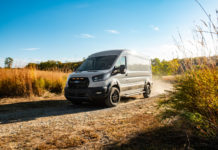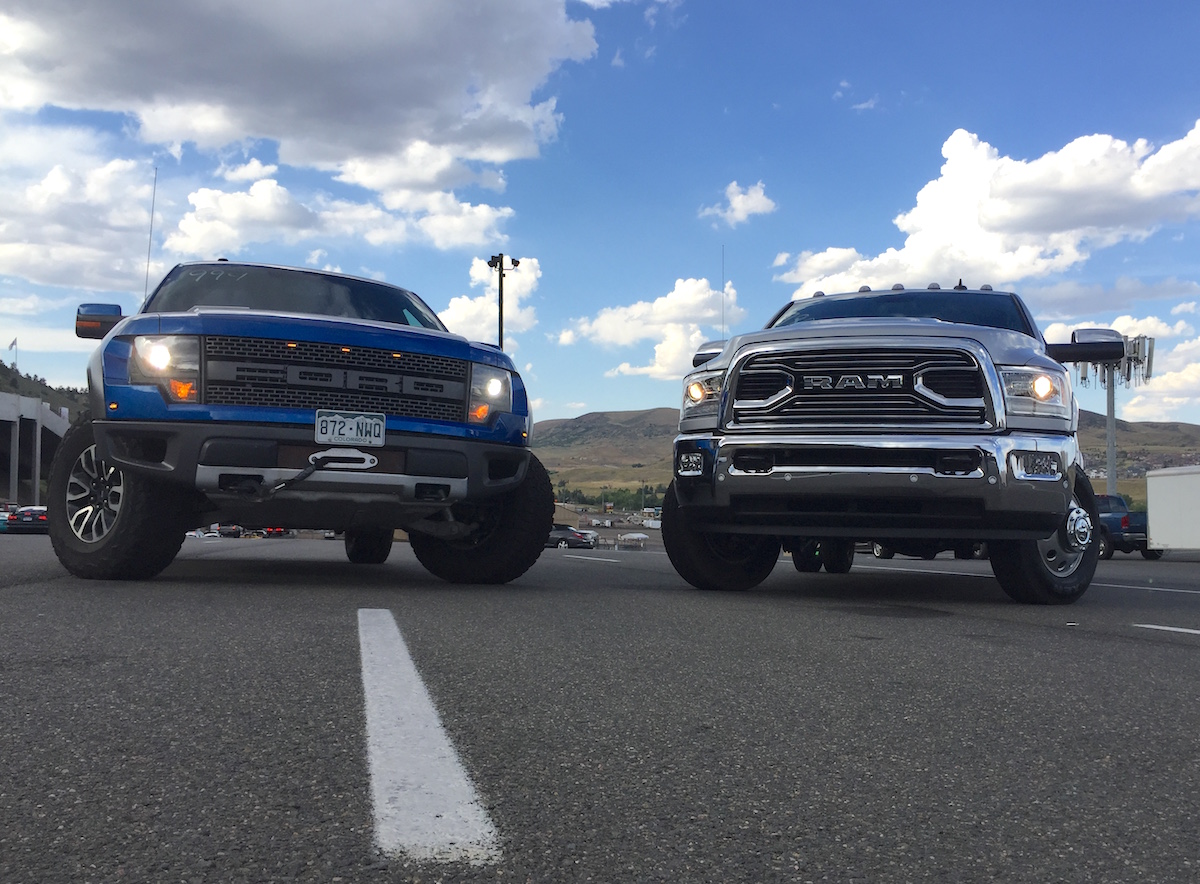
AWD vs. 4X4: Often customers are faced with a choice between and All Wheel Drive and Four Wheel Drive, but a lot of people may not know what the differences are between the two systems. Which one is better for certain types of driving? Andre and Nathan took an example of each vehicle up to our famous Gold Mine Hill to explain the differences and show you how each drivetrain performs in the worst weather the Rockies have to offer.
4×4
The 4X4 system is older and more straight-forward system of the two. 4X4 (also known as four wheel driver or 4WD) system splits power evenly between the front and rear axles. This means that there is always 50% of the power going to each axle. Additionally, most 4X4 systems can be switched off, sending the power to just two wheels, usually the rear wheels. The biggest advantage to this system is the consistent power in extreme off-road conditions. This system can be enhanced with locking differentials front and/or rear. This way you never have to worry about which wheel will be receiving power because they will all be getting the same amount. However, this system does reduce maneuverability in certain scenarios because the wheels are all moving at the same speed. Also, it is up to the driver to decide when to engage four wheel driver, low gear range for slower crawling, or lock and unlock the differentials.
AWD
AWD vehicles achieve a very similar goal, but use a slightly different, more complicated strategy. AWD systems utilize a front, center and rear differential and a variety of sensors to determine which wheels have the most grip, and automatically and seamlessly redirect power. This means that the vehicle is sending a variable amount of power to each wheel depending on condition. Additionally, this sort of drivetrain usually cannot be switched off, which can mean worse fuel mileage for the vehicle. The biggest advantage of AWD is that you never have to worry about hitting a patch of ice or snow. The car or crossover is always monitoring how much traction each wheel has and it will allocate power where your car needs it the most.
As Andre explains, the biggest difference between the two systems is the level of driver involvement. A 4X4 system requires the driver to choose which mode the vehicle should be in, whereas an AWD vehicle automatically dictates which wheels will be receiving power. Because of this distinction, it is usually only the most serious off-road SUVs and trucks that use a traditional 4X4 system. Whereas AWD systems tend to be implemented in cars, crossovers, and SUVs that deal more with variable road conditions where the road can become icy in an instant.
To see how these two systems compare in real world driving scenarios, check out the full video below:
















![Which is More Reliable: 3.5L EcoBoost or 5.0L V8? [Reader Question] Second-generation 3.5-liter EcoBoost engine](https://tfltruck.com/wp-content/uploads/2016/05/Second-generation-35-liter-EcoBoost-engine.jpg)
![Which Silverado Engine to Get: 5.3L or 6.2L V8? [Ask TFLTruck] 2016 chevy silverado](https://tfltruck.com/wp-content/uploads/2015/10/2016-chevy-silverado-grille.jpg)
